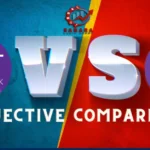IT Outsourcing Models: A Guide for Businesses

IT outsourcing is the practice of hiring external providers to perform IT-related tasks or projects for your business. IT outsourcing can help you save costs, access global talent, focus on your core competencies, and leverage advanced technologies.
But how do you choose the right IT outsourcing model for your needs? There are different types of IT outsourcing models based on location, relationship, and purpose. In this article, we will explain each type and provide some examples of successful cases.
Location-Based IT Outsourcing Models
Location-based IT outsourcing models refer to the geographical distance between you and your service provider. There are three main types:
- Onshore outsourcing: You outsource to a provider in the same country as yours. This can reduce communication issues, cultural differences, and legal risks. However, it can also be more expensive and less diverse than other options.
- Nearshore outsourcing: You outsource to a provider in a neighboring country or region that shares a similar time zone, culture, or language with yours. This can offer a balance between cost-effectiveness, quality, and convenience. However, it can also limit your choices and expose you to political or economic instability in the region.
- Offshore outsourcing: You outsource to a provider in a distant country or continent that has a different time zone, culture, or language from yours. This can offer the lowest costs, the widest pool of talent, and the most innovation potential. However, it can also pose challenges in communication, collaboration, and quality control.
Relationship-Based IT Outsourcing Models
Relationship-based IT outsourcing models refer to the degree of involvement and control you have over your service provider. There are four main types:
Staff augmentation: You hire individual developers or teams from an outsourcing company to supplement your in-house staff. You manage them directly and integrate them into your workflow. This can help you fill skill gaps, scale up quickly, and retain flexibility. However, it can also increase your management overhead, create conflicts with your existing staff, and reduce your long-term efficiency.
Project-based outsourcing: You delegate an entire project or a specific scope of work to an outsourcing company that handles it from start to finish. You define the requirements, budget, and timeline, and they deliver the results. This can help you reduce risks, save time, and access expertise. However, it can also limit your visibility, flexibility, and ownership of the project.
Managed services: You outsource a specific function or process to an outsourcing company that takes full responsibility for its performance and outcomes. You set the service level agreements (SLAs), key performance indicators (KPIs), and expectations, and they ensure the quality and continuity of the service. This can help you optimize costs, improve efficiency, and focus on your core business. However, it can also reduce your control, alignment, and innovation capabilities.
Dedicated team: You hire a dedicated team of developers from an outsourcing company that works exclusively for you as an extension of your in-house team. You collaborate with them closely and manage them indirectly through a project manager or a team leader. This can help you build long-term relationships, ensure quality and consistency, and foster innovation and growth. However, it can also require more investment, commitment, and integration than other options.
Purpose-Based IT Outsourcing Models
Purpose-based IT outsourcing models refer to the main goal or objective you want to achieve by outsourcing. There are three main types:
Strategic outsourcing
You outsource to gain a competitive advantage in your market or industry by accessing new technologies, markets, customers, or partners. You partner with an outsourcing company that shares your vision, values, and goals, and co-create value-added solutions that benefit both parties.
Tactical outsourcing
You outsource to improve your operational efficiency and effectiveness by reducing costs, increasing productivity, enhancing quality, or streamlining processes. You contract with an outsourcing company that offers standardized services that meet your specific needs and expectations.
Transformational outsourcing
You outsource to enable your digital transformation and innovation by adopting new business models, processes, platforms, or capabilities. You collaborate with an outsourcing company that provides customized services that help you solve complex challenges and achieve breakthrough results.
Examples of Successful IT Outsourcing Cases
Here are some examples of how different businesses have used different types of IT outsourcing models to achieve their goals:
- Netflix: The streaming giant has used offshore outsourcing to develop its platform and expand its global presence. It has partnered with several offshore development centers in India, Brazil, and Poland to access diverse talent and expertise, as well as to cater to local markets and regulations.
- Slack: The popular collaboration tool has used project-based outsourcing to launch its product and grow its user base. It has hired an outsourcing company in Canada to design and develop its prototype, beta version, and initial features, as well as to provide ongoing support and maintenance.
- IBM: The tech giant has used managed services to optimize its IT infrastructure and operations. It has outsourced its IT functions such as data center management, cloud computing, cybersecurity, and network services to various outsourcing companies around the world, such as Accenture, HCL, and Wipro.
- Basecamp: The project management software has used a dedicated team to enhance its product and customer experience. It has hired a dedicated team of developers from an outsourcing company in Romania to work on its core features, integrations, and improvements, as well as to provide feedback and suggestions.
Conclusion
IT outsourcing can offer many benefits for your business, but it also requires careful planning and decision-making. You need to consider various factors such as your budget, timeline, scope, quality, risk, and goals when choosing the right IT outsourcing model for your needs.
To help you make the best choice, you can consult with an experienced IT outsourcing company that can guide you through the process and offer you the most suitable solution. At Sagara Media Group LLC, we have been providing IT outsourcing services for over 10 years, and we have worked with clients from various industries and regions. We can help you find the best IT outsourcing model for your business, whether it is onshore, nearshore, offshore, staff augmentation, project-based, managed services, dedicated team, strategic, tactical, or transformational.
If you are interested in learning more about our IT outsourcing services and how we can help you achieve your goals, contact us today for a free consultation.

